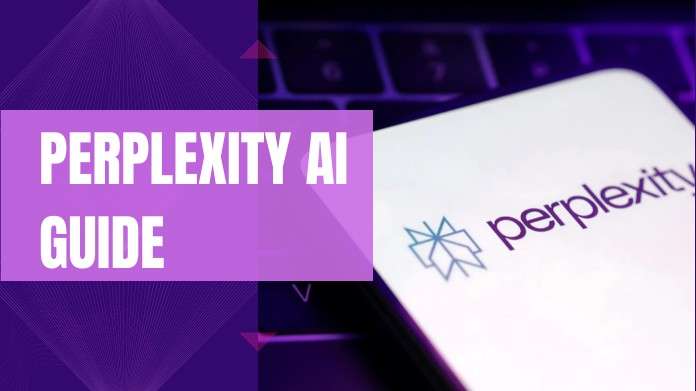

Have you ever wished your search engine would provide you with a direct, correct response instead of a list of links? If this sounds familiar, you have come to the right place.
With its insightful, citation-supported answers, Perplexity AI is revolutionizing the field, whether you're studying a challenging subject or are simply interested in the subsequent development in artificial intelligence.
With so much data available in a digital environment, it is more important than ever to find reliable and accurate information fast. This brings up the debate between Perplexity Vs ChatGPT; both offer conversational AI experiences, but they differ in their benefits.
Perplexity is gaining popularity among professionals, students, and researchers due to its emphasis on providing real-time solutions with linked sources.
In this article, you'll learn about Perplexity AI, how it works, how it compares to applications like ChatGPT, and why it could become your new preferred technique for web searches.
WHAT IS PERPLEXITY AI?
As with conversing with an educated assistant, Perplexity AI is a conversational search engine driven by AI designed to provide clear, accurate, and contextual answers to queries. Perplexity, created using advanced language models such as OpenAI's GPT, blends web search & generative AI to deliver concise responses with cited sources.
While traditional search engines (such as Google) present users with a list of links, Perplexity offers intelligent natural language responses backed by real-time online results. Google Search and ChatGPT have many features, but there is a greater emphasis on verifiable information & clarity.
HOW DOES PERPLEXITY WORK?
Perplexing AI uses large language models to understand natural language questions. It gathers relevant information from the internet using its real-time search capabilities and generates responses that are supported by credible sources, referencing them in the response.
This means when you ask a question, Perplexity:
- Uses AI models to understand your intent.
- Retrieves the most relevant and up-to-date web data.
- Synthesizes a coherent, well-structured answer.
- Lists the sources so you can verify the facts yourself.
- It can provide technical explanations, in-depth research, and even help with coding, all in a conversational manner, in addition to fundamental data.
KEY FEATURES OF PERPLEXITY AI
- Cited Sources: References are included in each response to help guarantee dependability and transparency.
- Copilot Mode: Offers a research assistant experience powered by chat, ideal for in-depth investigations.
- Real-Time Web Access: Perplexity retrieves up-to-date information from the internet, unlike specific static AI tools.
- Minimalist Interface: The design is uncomplicated and straightforward, focusing on learning & knowledge retrieval.
- Free to Use: Pro upgrades are optional, but the majority of core features are available at no additional cost.
HOW IS PERPLEXITY AI DIFFERENT FROM CHATGPT?
Although they both make use of extensive language models, their methods for accessing and utilizing data are where they differ most:
1. Real-Time Web Access: Perplexity AI ensures current responses by retrieving data straight from the internet. Pre-trained knowledge with a cutoff date is used by ChatGPT (without browsing).
2. Cited Sources: Each response in Perplexity has a visible source link. Unless browsing is enabled, ChatGPT usually doesn't cite sources.
3. Purpose and Interface: Perplexity is quick, targeted, and simple, much like a search engine. For creative tasks, ChatGPT provides a conversational, assistant-like experience.
4. Web Access Availability: You can use Perplexity's real-time web search for free. Only subscribers to ChatGPT's Plus or Pro plans can use the browsing feature.
5. Response Style: Perplexity provides succinct, accurate summaries. For more in-depth discussions, ChatGpt provides more complex, context-rich explanations.
USE CASES: WHO BENEFITS FROM PERPLEXITY AI?
- Students seeking reliable, condensed academic material.
- Scholars seeking a concise synopsis of a subject with references.
- Authors and content producers are producing precise, referenced data.
- Tech workers and developers are looking for references for coding assistance.
- Perplexity is a clever assistant that provides you with more than just connections; it provides understanding, whether you're learning quantum mechanics or a new programming language.
LIMITATIONS AND CONSIDERATIONS
Despite its strengths, Perplexity is not without limitations:
- It still depends on the reliability of online data, which isn't always reliable.
- Biases in the sources or training data may impact the results.
- It is a valuable tool in the process, but cannot take the place of in-depth investigation or critical thought.
WHY IS PERPLEXITY AI GAINING POPULARITY?
Confusing AI is gaining recognition for striking a balance between academic integrity and AI intelligence. It's beneficial in a time when people are wary of AI "hallucinations" and prefer transparent, verifiable responses.
Tools like Perplexity are gaining popularity as the demand for reliable, up-to-date information increases.
FINAL THOUGHTS
Perplexity AI is a significant advancement in the way we trust and consume information. It provides a more intelligent and ethical method of finding information online by combining conversational AI with modern internet search and open-source technology.
Perplexity helps you learn more effectively, more quickly, and with greater confidence, regardless of whether you're a professional, student, or just inquisitive. Anyone searching for fast, trustworthy insights without the noise can use it thanks to its easy-to-use interface.
ABOUT THE AUTHOR
I'm Christian Steal, a tech enthusiast and software developer who is passionate about examining how artificial intelligence is changing how we find, understand, and engage with information. Fast, accurate, and source-backed tools like Perplexity AI mark a significant change in the way knowledge is disseminated.
I can share my thoughts with people who are as interested in the future of AI-powered tools as I am by writing about cutting-edge technology like this.
Did you find the article enjoyable? I would be interested in hearing your thoughts on Perplexity AI or ChatGPT.
Ref:
Garn, D. (2025, April 28). How to use Perplexity AI: Tutorial, pros and cons. TechTarget. https://www.techtarget.com/searchenterpriseai/tutorial/How-to-use-Perplexity-AI-Tutorial-pros-and-cons